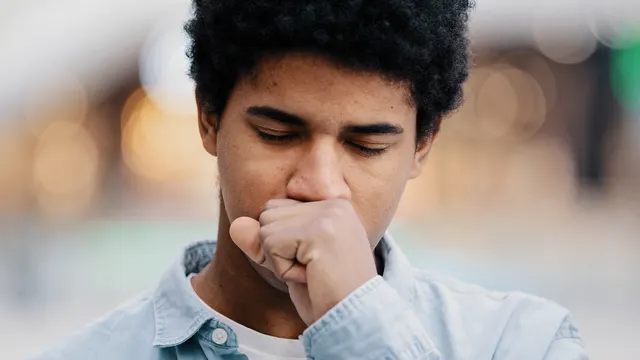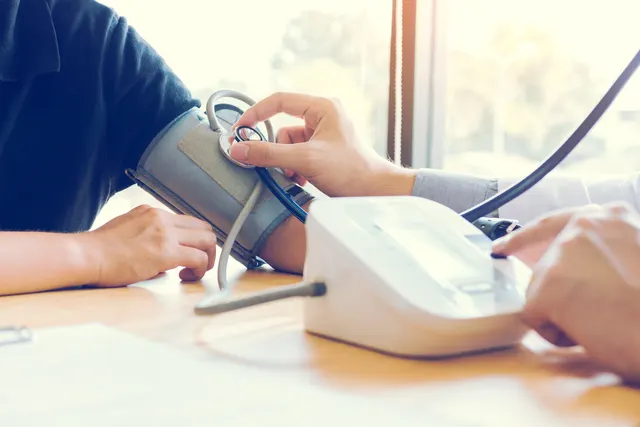What are the 4 stages of COPD
Chronic Obstructive Pulmonary Disease (COPD) is a progressive lung condition that affects millions of people worldwide. It’s not a single disease, but a group of diseases—including emphysema and chronic bronchitis—that cause airflow obstruction and breathing-related problems. One of the most important aspects of COPD management is understanding its four stages, as each stage determines the severity of the disease and guides the treatment approach.
In this blog, we will break down the 4 stages of COPD, their symptoms, diagnosis, and what steps patients can take at each level to manage their condition effectively.
What Is COPD?
Before we dive into the stages, it’s important to understand what COPD is.
COPD is a chronic, progressive lung disease that makes it hard to breathe due to narrowed airways and damage to lung tissue. It usually develops after years of exposure to irritants like cigarette smoke, air pollution, or workplace fumes. Many people with COPD may also have asthma, which can complicate the condition further.
Main symptoms of COPD include:
- Shortness of breath (especially during activity)
- Chronic cough
- Production of sputum (mucus)
- Wheezing
- Fatigue
- Chest tightness
COPD is usually diagnosed with a spirometry test, which measures how much air you can inhale and exhale, and how quickly you can exhale it.
The 4 Stages of COPD (According to GOLD Guidelines)
The Global Initiative for Chronic Obstructive Lung Disease (GOLD) classifies COPD into four stages based on the severity of airflow limitation, as measured by the FEV1 value (Forced Expiratory Volume in 1 second). This classification helps doctors determine the best treatment plan and predict outcomes.
Let’s explore each stage in detail:
Stage 1: Mild COPD (GOLD 1)
- FEV1 ≥ 80% of predicted
- Symptoms: Often minimal or absent
In the early stage of COPD, a person may not even realise they have a problem. There might be a mild cough or increased mucus production, often mistaken for a lingering cold or smoker’s cough.
At this stage:
- Shortness of breath is rare or only with strenuous activity.
- Lung function is only slightly reduced.
- Many people ignore symptoms or are undiagnosed.
Management Tips:
- Quit smoking immediately if you haven’t already.
- Avoid exposure to irritants like dust, fumes, and second-hand smoke.
- Begin light aerobic exercise and breathing exercises.
- Vaccinate against influenza and pneumonia to prevent complications.
Early detection is key. If you experience even occasional breathlessness or a chronic cough, don’t ignore it get a pulmonary function test.
Stage 2: Moderate COPD (GOLD 2)
- FEV1 50–79% of predicted
- Symptoms: Noticeable shortness of breath during physical activity, frequent coughing
This is often the stage when people seek medical help, as symptoms become more apparent and begin to interfere with daily life.
At this stage:
- Shortness of breath worsens, especially while walking or climbing stairs.
- Mucus production increases.
- Cough becomes more frequent and harder to manage.
- You may have your first exacerbation (flare-up) requiring medication or hospital care.
Management Tips:
- Inhalers (bronchodilators) are usually prescribed to open airways.
- Pulmonary rehabilitation programs help improve stamina and lung function.
- Continue avoiding triggers and smoking.
- Monitor symptoms regularly and stay active.
The key at this stage is to maintain lung function and prevent progression to severe stages through medical treatment and lifestyle changes.
Stage 3: Severe COPD (GOLD 3)
- FEV1 30–49% of predicted
- Symptoms: Increased breathlessness, fatigue, frequent exacerbations
In this stage, COPD symptoms become much more severe and start affecting quality of life.
At this stage:
- You may experience breathlessness even during simple tasks like dressing.
- Fatigue becomes more common.
- Exacerbations become frequent and may lead to hospitalisation.
- Daily life becomes more restricted due to breathing difficulties.
Management Tips:
- Long-acting bronchodilators and inhaled corticosteroids are often prescribed.
- Oxygen therapy may be needed for patients with low blood oxygen levels.
- A personalised action plan is necessary to handle flare-ups.
- Psychological support is important—many patients feel anxious or depressed at this stage.
At this point, close follow-up with a pulmonologist is crucial. Advanced care planning and support systems should also be discussed.
Stage 4: Very Severe COPD (GOLD 4)
- FEV1 < 30% of predicted
- Symptoms: Extremely limited activity, chronic respiratory failure, life-threatening exacerbations
This is the most advanced stage of COPD, sometimes called end-stage COPD. The damage to the lungs is severe, and symptoms are constant.
At this stage:
- Breathlessness is present even at rest.
- Quality of life is significantly impaired.
- Flare-ups are frequent and may require intensive care.
- You may develop complications such as heart problems, weight loss, or respiratory failure.
Management Tips:
- Long-term oxygen therapy is often essential.
- Palliative care and advanced respiratory support may be needed.
- Lung volume reduction surgery or lung transplant may be considered in select cases.
- Emotional and family support are very important.
Even at this stage, proactive care can help manage symptoms and prevent frequent hospitalisations.
Final Thoughts: Living Well at Every Stage of COPD
Understanding the 4 stages of COPD empowers patients and caregivers to take timely action. Whether you’re in the early stages or dealing with more advanced disease, early diagnosis, treatment, and lifestyle changes can slow progression and improve your quality of life.
If you or a loved one is experiencing persistent breathlessness, chronic cough, or frequent chest infections, it’s time to consult a specialist. Dr. Hrushikesh Vaidya is a trusted name for COPD treatment in Thane, offering personalised care based on your stage, symptoms, and lifestyle. From early diagnosis to advanced pulmonary rehabilitation and oxygen therapy, Dr. Vaidya provides a comprehensive approach to managing all stages of COPD.
Related Posts

The Dos and Don’ts of Managing Chronic Cough: Essential Tips for Patients
- Dr Hrushikesh Vaidya
- February 10, 2025
The Dos and Don’ts of Managing Chronic Cough: Essential Tips for Patients A chronic cough ..

Difference Between Asthma and COPD
- Dr Hrushikesh Vaidya
- October 10, 2025
Difference Between Asthma and COPD Breathing problems are among the most common reasons people ..




